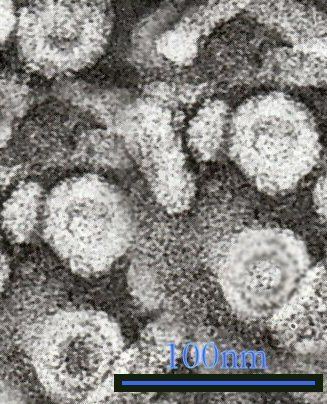Group Group VII (dsDNA-RT) | Order Unassigned Rank Genus | |
 | ||
Similar Hepadnaviridae, Hepacivirus, Mastadenovirus, Coltivirus, Lymphocryptovirus | ||
Medical vocabulary what does orthohepadnavirus mean
Orthohepadnavirus is a genus of viruses, in the family Hepadnaviridae. Human and mammals serve as natural hosts. There are currently five species in this genus including the type species Hepatitis B virus. Diseases associated with this genus include: hepatitis, hepatocellular carcinoma (chronic infections), cirrhosis.
Contents
- Medical vocabulary what does orthohepadnavirus mean
- How to pronounce orthohepadnavirus
- Structure
- Life Cycle
- Taxonomy
- References
How to pronounce orthohepadnavirus
Structure
Viruses in Orthohepadnavirus are enveloped, with spherical geometries, and T=4 symmetry. The diameter is around 42 nm. Genomes are circular, around 3.2kb in length. The genome codes for 7 proteins.
Life Cycle
Viral replication is nucleo-cytoplasmic. Replication follows the dsDNA(RT) replication model. DNA-templated transcription, specifically dsDNA(RT) transcription, with some alternative splicing mechanism is the method of transcription. Translation takes place by leaky scanning. The virus exits the host cell by budding, and nuclear pore export. Human and mammals serve as the natural host. Transmission routes are sexual, blood, and contact.
Taxonomy
Group: ssRNA-RT
